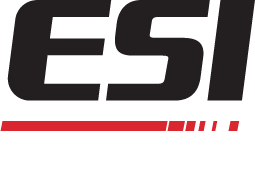In the world of flexible packaging printing, or really anywhere within the Flexo printing industry, the goal is to produce amazing and brilliant final images in a manner that is cost effective, fast, reliable, and safe. Over the last two decades, technology and innovation have made huge improvements to the Flexo industry, streamlining processes and driving efficiency into the operation.
Read MoreThe applications and markets within the flexible packaging industry continue to grow without signs of slowing down. Due to the product’s on-the-shelf appeal to consumers, more efficient uses and options for storing is experiencing unprecedented growth in the U.S. From 2012 to 2013, the U.S. flexible packaging market grew 3 percent, from $26.7 billion to $27.5 billion.
Read MoreWith Gravure printing the image is etched onto a metal plate or cylinder surface, and as you may expect, the final print product can be a very fine, detailed image. The Gravure process for some printing applications, however, is not as efficient, or affordable, and may not have the quick flexibility to adapt to different print run lengths, colors, and actions.
Read MoreWhen it comes to printing, there are many ink options based on the type of substrates , and capabilities of the operation. Depending on the use, for example, there are Lithographic inks, Flexographic inks, Gravure inks, Letterpress inks, Digital inks and more. Each printing application needs specifically engineered ink that will help maximize efficiency, output,and profits while producing an excellent final product.
Read MoreOver the past 15 years, the world of flexible packaging has seen a lot of changes. New environmental and safety regulations have forced packages to alter their shape, chemical composition and even how they open and close. But that has not slowed down the growth of the industry.
Read MoreThere are four main factors when examining the true value of ink used in flexible package printingand other applications: 1. Quality—what is the final visual result of the printed product. Are there smears? Did the ink lay down properly? 2. Cost—what kind of cost benefits or increases did the specific ink you chose cause? 3. Environmental—does the ink you use result in unnecessary harm to the environment or cause the printing operation to pass certain regulatory tests and certifications? 4. Safety—the ink that is used, is it safe for both what’s going into the package and for the machine operators and transporters? Let’s examine each numbered point as it relates to solvent ink vs. electron beam ink:
Read MoreWhen it comes to flexible package printing and other printing applications, it’s all about the final product. How does the package or container looks when the process is complete? Was there significant dot gain? Will the ink hold up against scratches and moisture? If the print fades or loses any of its original shine by the time it sits on the shelf, then the consumer and the producer are not happy.
Read More
